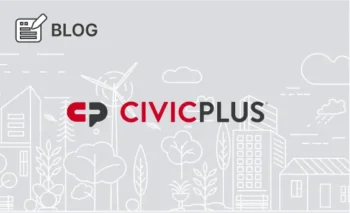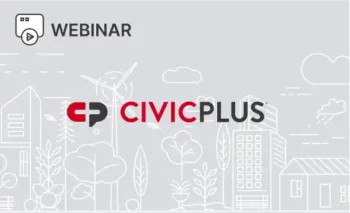How to Handle Student FOIA Requests Without Violating FERPA
Public records laws are designed to ensure transparency in government. In the K-12 setting, however, these laws often come into direct contact with student privacy protections.
When public records requests—often called FOIA requests, after the federal Freedom of Information Act—involve education records protected by the Family Educational Rights and Privacy Act (FERPA), publicly funded school districts must navigate complex legal territory.
Mishandling a request can lead to legal consequences, reputational damage, and long-term harm to the students involved. Privacy violated once can mean trust broken for years while robust privacy and data stewardship can help prevent such incidents from ever occurring.
This blog provides guidance for public school K-12 administrators, records managers, and legal teams working to balance public access with their obligation to protect sensitive student information. With the right knowledge and tools, school districts can manage FOIA and public records requests in a more compliant, efficient, and student-focused manner.
The High Stakes of Student-Related FOIA
In recent years, several high-profile incidents have highlighted the risks associated with improperly handling public records requests. In one case, a school district in Virginia inadvertently disclosed records for over 35,000 students. The records, provided via unencrypted thumb drives, included names, ID numbers, grades, and special education designations. This incident triggered FERPA complaints, media coverage, and widespread community concern.
Not releasing records properly may also lead to public backlash, legal appeals, or accusations of a lack of transparency. In Connecticut, a district’s refusal to release a bullying investigation report—citing student privacy—sparked public frustration and legal action. While the courts ultimately upheld the district’s decision, the case reveals how perceived secrecy can erode community trust and prompt appeals or lawsuits.
These examples show that FOIA and public records processing errors that involve student information can carry serious consequences. Clerical missteps can quickly escalate into issues that affect families, overburden staff, and weaken public trust in school systems.
Understanding the Relationship Between FERPA and FOIA
These risks exist because two federal laws intersect in ways that put school districts under pressure. FOIA and state public records laws are designed to give the public access to government records. FERPA protects the privacy of student education records.
In K-12, FERPA takes precedence. If a requested record contains student information, it cannot be released under FOIA and state public records laws unless the data is fully de-identified or an exception applies. FERPA is codified in 20 U.S.C. § 1232g and implemented through 34 CFR Part 99, which also requires schools to log disclosures and prevent unauthorized sharing.
Inside the Impact: A Closer Look at Student-Related FOIA
There is also a broader stakeholder context to consider when managing K-12 student-related FOIA and public records requests.
When a public school district either releases or withholds student records inappropriately, the impact extends well beyond the initial request. The effects ripple through the entire school community, influencing students, families, staff, and district leadership.
Key Stakeholder: Students
Students face the greatest risk when public records requests overlap with FERPA protections. FERPA covers any record related to a student and maintained by the school or a service provider working for the school. That can include databases, discipline files, staff emails, and even cloud-based documents.
Details like names, addresses, grades, Individualized Education Programs (IEPs), discipline history, or health information are highly sensitive. Once released in digital form, they can spread quickly and permanently. At the K-12 level, while parents and students themselves have the right to see these records under FERPA, the general public does not.
Examples of PII in K-12 Student Records*
| Category of PII | What It Includes | Day-to-Day Example | FOIA/FERPA Release Guidance |
|---|---|---|---|
| Basic identifiers | Name, home address, phone number, date of birth, student ID numbers, login credentials, yearbook/ID photos | A class roster with student names and birthdays; student ID card photo | Generally requires redaction unless designated as “directory information” and family has not opted out |
| Academic records | Grades, transcripts, test scores, class schedules | A parent request for their child’s report card | Not releasable under FOIA; protected education records under FERPA |
| Disciplinary records | Suspensions, detentions, incident reports | A written referral noting a student’s fight at school | Not releasable without parental consent; disclosure would violate FERPA privacy protections |
| Special education and 504 records | IEPs, 504 plans, service delivery notes, accommodation records | An IEP document listing services for a student with ADHD | Not releasable; highly sensitive and strictly protected under FERPA |
| Health/medical records | Medical history, immunization records, nursing logs, counseling/mental health notes | School nurse’s record of student medications | Not releasable; protected by FERPA and, in some cases, HIPAA |
| Biometric identifiers | Facial recognition templates, fingerprints, retinal or iris scans, voiceprints | Security camera system using facial recognition to match students | Not releasable if a student is identifiable; de-identified data may only be shared in rare cases |
| Family/guardian information | Parent/guardian names, addresses, custody information, emergency contacts | An enrollment form listing a student’s custodial parent and contact info | Not releasable; disclosure would expose private family data |
*Disclaimer: This information is provided for informational purposes only. Consult your legal counsel for advice on redaction best practices and compliance.
Exposure of student data that contains personally identifiable information (PII) may lead to:
- Harassment or bullying by peers or online actors
- Reputational harm that limits opportunities for scholarships, admissions, or employment
- Misinformation or misidentification when data is misinterpreted by the public or media
Key Stakeholder: Families and Caregivers
Families and caregivers involved in an inappropriate release often face equally serious challenges. When privacy protections fail during student records requests, mistrust can alter how families and caregivers interact with schools in several ways, leading to lower engagement and reduced willingness to seek services, report concerns, or participate in school activities.
In some cases, families may also shift from being partners in the educational process to outspoken critics of the district, filing additional complaints and sustaining opposition that strains long-term relationships.
These stakeholders may:
- Fear that appeals, complaints, or service requests will lead to future disclosures
- Experience a loss of trust in district leadership and governance processes
- Become reluctant to report concerns related to special education, behavioral support, or disciplinary actions
Key Stakeholder: Educational Staff and Administrators
K-12 staff are often responsible for both managing FOIA and public records requests and safeguarding student privacy. When processes fail, personnel may experience operational strain, reputational consequences, and even job loss.
Common impacts on staff can include:
- Increases in workload, especially when managing large or complex public records requests
- Staff burnout or reduced morale due to pressure and scrutiny
- Public criticism or internal consequences tied to mistakes in redaction or release
Legal and professional risks may also arise:
- Exposure to liability if mishandling is documented
- Risk of being named in complaints or investigations
- Lasting reputational damage within the school community
- Potential employment consequences, including disciplinary action or job loss
Key Stakeholder: School Districts and Legal Teams
Like government entities and special districts, K-12-level public school districts are legally accountable for FERPA compliance and public records handling. The institutional risks to a mishandled release are significant and can trigger multiple layers of response and reform.
- Legal consequences may include:
- FERPA complaints filed with the Department of Education (DOE) which can lead to corrective actions; continued noncompliance can lead to the withholding of federal funds
- Mandated corrective action or training following an investigation
- Settlement costs or legal fees stemming from appeals or litigation
- Broader district-wide impacts may involve:
- Loss of public trust and reputational fallout, especially when student privacy is compromised
- Challenges in passing referenda or maintaining board support
- Negative attention from the community, media, and advocacy groups
The Growing Volume and Complexity of Records Requests
Many K-12 districts receive dozens to hundreds of FOIA and public records requests each year. Larger districts may process more than 1,000 annually. For example, Houston Independent School District received a deluge of 1,174 requests during the 2023–24 school year.
FOIA requests are time- and labor-intensive, often requiring manual review, redaction, legal input, and cross-department coordination. Student data requests are especially demanding, with each record needing line-by-line scrutiny to comply with Open Records laws and FERPA. As these requests grow more complex, they can fuel rising anxiety and uncertainty about how to respond properly.
In many states, public schools must confirm they’ve received a records request and provide a response within a set timeframe, usually between 3 and 20 business days. On average, districts spend about 25 days completing searches, reviews, and redactions. While often within legal limits, even small delays or errors can trigger appeals, legal challenges, and community mistrust.
Without a centralized records request system in place, fulfillment can take days or even weeks, diverting staff from core educational responsibilities.
Clear Response Time Versus Fulfillment: What’s the Difference?
Acknowledging a request simply confirms receipt and meets the initial deadline. Fulfillment means completing the entire process, including reviewing the records for proper redaction and preparing these records for release. An empowered FOIA and public records fulfillment workflow includes the following steps:
- Acknowledge the request within the required state timeline
- Classify the request type and flag if student data is involved
- Search across systems and repositories for responsive records
- Review documents to determine relevance and exemptions
- Batch redact sensitive information in compliance with FOIA and FERPA
- Conduct a secondary review to ensure proper redaction
- Release records with proper logging and documentation
- Auto Archive the full request packet, including correspondence and redaction logs, for future audits or appeals; in archiving software, this step is automated
NextRequest’s templated responses and batch redaction save staff time on routine steps while helping them meet required response times.
How to Avoid the Pitfalls of K-12 FOIA Handling
Given the complexity and breadth of what’s considered protected student records, there are understandably several persistent misconceptions and pitfalls in how state-level FOIA and public records requests are handled in K-12 settings.
Common Pitfalls in Student-Related FOIA Handling
Even experienced staff can struggle with the complexity of FOIA and public records responses involving students. The following issues are especially common:
1. Redaction Errors
Over-redaction can reduce transparency and invite appeals. Under-redaction may expose PII through timestamps, metadata, or file names.
2. Misclassified Records
Texts, emails, social media messages, and recordings are often overlooked and not archived properly. If they reference students, they are often considered education records.
3. Disorganized Storage Systems
Records spread across various drives, email inboxes, and paper files increase the chance of misplacing or neglecting relevant information.
4. Unclear Workflows
A lack of standard processes for intake, review, and redaction increases the risk of inconsistent or incomplete responses.
5. Insufficient Training
Staff may not know how to identify indirect identifiers or apply exemption codes correctly. Without regular training, even routine requests can create legal exposure.
6. Cross-Department Fragmentation
When legal, IT, and student services handle records separately, the lack of a unified process often leads to delays, overlooked files, and missed deadlines.
Common Misconceptions Concerning K-12 FOIA Requests
Even with the right knowledge, common misunderstandings about FOIA and FERPA can still create risks.
Common Misconception: Directory information is always public.
Fact: Parents or eligible students can opt out.
Common Misconception: Redacting names is always sufficient.
Fact: Sensitive information often hides in more than just names. Proper redaction includes file names, email metadata, timestamps, login credentials, health or financial details, and small group data that could expose identities via contextual clues.
Common Misconception: Staff emails about students are never education records.
Fact: Emails that directly identify and discuss a student are generally considered education records under FERPA and must not be released under public records laws. Emails that do not qualify as education records may still fall under state open records laws (e.g., California, Illinois, Wisconsin, North Carolina). In practice, all staff emails must be carefully reviewed and redacted as needed before any release to ensure student privacy.
Best Practices for Safe, Compliant FOIA Handling
Districts can help reduce their risk by first understanding them, and then establishing a clear process that is repeatable, documented, and informed by legal guidance.
- Flag student-involved requests early using a checklist or intake form.
- Build a step-by-step workflow that includes search, review, redaction, and logging.
- Use standardized redaction tools that provide explanations and maintain a redaction log.
- Conduct quarterly training for records staff, including tabletop exercises using real-life scenarios.
- Practice “technology hygiene” and centralize records using secure systems that control access and allow for consistent versioning.
A Modernized Workflow With NextRequest
CivicPlus® NextRequest offers features specifically built to reduce the burden of student-related FOIA requests and improve legal defensibility:
- Batch redaction with automated PII detection
Identify and redact names, addresses, ID numbers, dates of birth, and other student identifiers across large sets of documents and attachments in one action—dramatically reducing manual review time. - Role-based access controls
Limit who can view, edit, or release sensitive records based on user roles to minimize risk and ensure proper internal review. - Defensible audit trails
Maintain a full record of every action taken on a request, including edits, redactions, and communications, to support appeal readiness and internal oversight. - Centralized request management
Keep intake, searches, review steps, exemption tracking, redaction logs, and release documentation all in one secure system. - Integrated social media archiving
Use the right all-in-one social media archiving software to capture public-facing posts, comments, and direct messages from official school accounts and route them into the FOIA workflow when student records are involved.
Together, NextRequest and Social Media Archiving can help K-12 public school districts— like River Gardens School District—reduce manual work, shorten turnaround times, and maintain consistent, policy-aligned practices.
Example of K-12 FOIA Success: Paradise Valley Unified School District
Before adopting streamlined tools, Paradise Valley Unified School District in Arizona struggled with rising volumes of complex records requests that strained staff capacity and increased the risk of errors. By modernizing its process with NextRequest and Social Media Archiving, the district achieved measurable improvements in both speed and compliance.
Key outcomes included:
- Cut fulfillment timelines from months to days
- Reduced review time with batch redaction and de-duplication
- Centralized FOIA records tracking with a request dashboard
- Archived 850+ social posts monthly and 2,300 website snapshots every six months for compliance and investigations
Get the FOIA Workflow Tools That Support K-12 Teams
District leaders have a duty to uphold transparency while safeguarding student rights. With the right tools and a proactive approach, they can meet public records obligations without compromising compliance. Public trust, once breached, is difficult to restore. A strong workflow can help ensure that it is never broken in the first place.
To learn more about how NextRequest supports compliant FOIA and public records responses for student-related records, visit https://www.civicplus.com/k12-education/.


